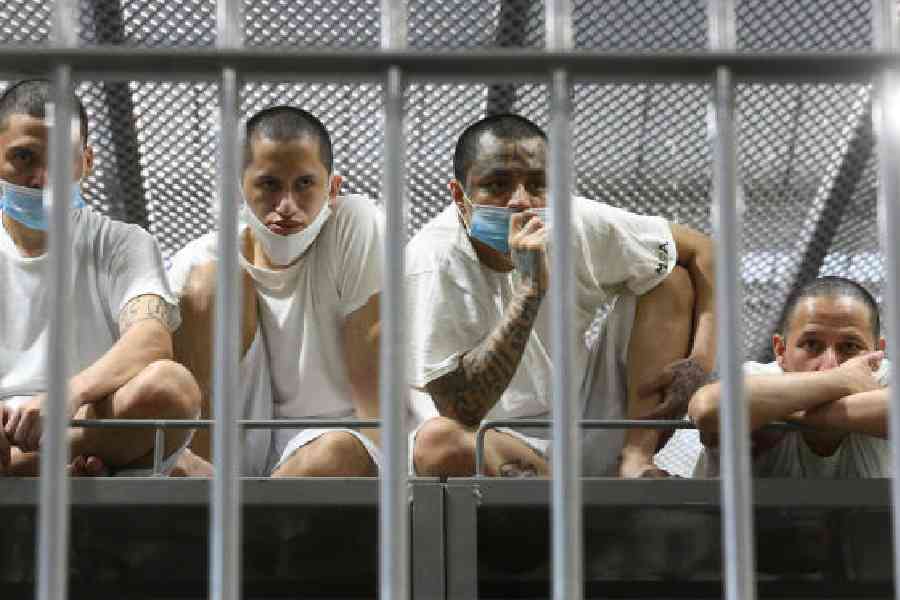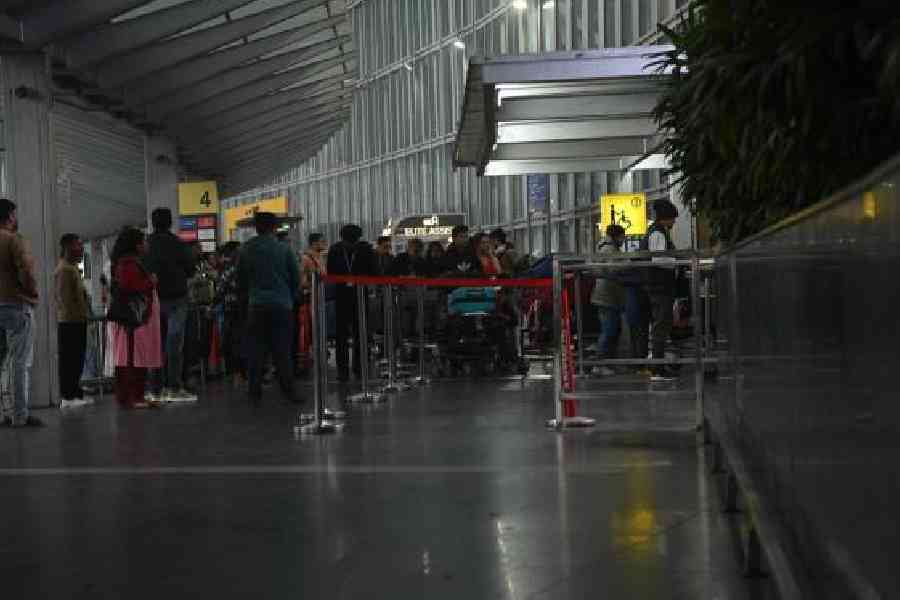The Trump administration is seeking to spend up to $45 billion to expand immigrant detention on an unprecedented scale, according to The New York Times.
According to a request for proposals posted last week by the Department of Homeland Security’s Immigration and Customs Enforcement, contractors are being invited to submit bids to build detention facilities and provide transportation, security, medical care and administrative services across the country.
The goal? To lay the physical and logistical groundwork for what the administration envisions as a mass deportation campaign, targeting both undocumented immigrants and pro-Palestinian activists.
As the New York Times reported, ICE currently lacks the funds to fulfill this vision but is anticipating a significant financial windfall from the recently passed GOP budget.
Senate Republicans approved a plan to pump $175 billion over ten years into immigration enforcement infrastructure.
The $45 billion request signals how rapidly ICE is preparing to operationalise those funds.
"This is D.H.S. envisioning and getting ready to unroll — if it gets the money — an entirely new way of imprisoning immigrants in the U.S.," Heidi Altman, vice president for policy at the National Immigration Law Center, told The New York Times.
The proposal essentially creates a massive national roster of detention options and services, allowing ICE to execute snap orders as funding arrives without the lengthy red tape typical of government procurement.
“What’s going on is the administration is very concerned that they don’t have enough detention capacity to accomplish their immigration enforcement needs,” said Kevin Landy, former director of detention policy under President Barack Obama, in a statement to The New York Times.
As of March 23, ICE was already detaining approximately 47,900 individuals—well over the 41,500 daily average funded by Congress last year.
But it’s not just the scale of expansion that is drawing scrutiny. It’s where people are being held and who is being targeted.
The crackdown moves South
Recent weeks have seen a chilling pattern emerge.
According to NPR, multiple immigrant university students and scholars have been arrested, many linked to pro-Palestinian activism, and transferred to detention centers in Louisiana and Texas.
These include Mahmoud Khalil, a Columbia graduate student; Rumeysa Ozturk, a Tufts student; and Badar Khan Suri, a Georgetown scholar.
Khalil was taken from his New York apartment and sent to a Louisiana detention center nearly three hours from the nearest city. Ozturk was arrested on the street near Boston by mask-wearing agents and transported to a private prison in rural Louisiana less than 24 hours later. Khan Suri, an Indian national and academic, was first taken to Louisiana and then moved to Prairieland Detention Center in Alvarado, Texas, where, according to NPR, he now sleeps on the floor due to lack of beds.
"It’s pretty alarming," Eden Heilman, legal director at the ACLU of Virginia, was quoted as saying by NPR. "There appeared to be an effort to get him out of the state of Virginia."
In court, federal attorneys argued the transfers were due to a shortage of local bed space, but that claim has faced judicial skepticism.
A judge in Ozturk’s case rejected the government’s request to relocate the case to Louisiana, citing the availability of beds just 100 miles away in Maine.
“This is now a pattern, I think, that has become quite clear,” said Brett Kaufman, an attorney with the ACLU. “The government believes it has an advantage if it brings people down there.”
Louisiana, Texas and Mississippi host 14 of the 20 largest immigrant detention centers in the US, many run by for-profit prison companies. Louisiana alone houses over 7,000 detainees, making it second only to Texas.
“You take someone away from their community, from their family, from their lawyers,” Kaufman added. “It really is a huge, debilitating thing to not be able to walk into a facility and spend time with your client face to face.”
Deporting with a wartime law
The administration's tactics don’t stop at bulk contracts and geographical isolation.
The Trump team has also invoked the 1798 Alien Enemies Act, a centuries-old wartime law previously used during the World Wars to justify the internment of Japanese, German and Italian Americans.
As reported by AP, the Supreme Court recently allowed the administration to use the law to deport Venezuelan migrants it accuses, without public evidence, of being members of the gang Tren de Aragua.
Over 130 men were deported last month to El Salvador.
The administration maintains the deportations are a matter of national security. Trump himself, on March 15, the same day as the deportations called Tren de Aragua’s activity “an invasion or predatory incursion.”
“This is a time of war”
The language from Trump and his officials is unmistakably militaristic.
“This is a time of war,” he said last month, according to reports. The administration has even designated multiple Latin American criminal groups as “foreign terrorist organizations”.
Critics, however, warn that applying wartime measures to domestic immigration enforcement is a dangerous overreach. “Trump’s attempt to twist a centuries-old wartime law to sidestep immigration protections is an outrageous and unlawful power grab—and it threatens the core civil liberties of everyone,” said Scott Michelman, legal director at the ACLU of the District of Columbia.
The architecture of detention
The Trump administration's $45 billion blueprint is not merely a spending plan.
If fully funded, the proposal would mark a sixfold increase in detention spending, transforming rural detention facilities into hubs of a sprawling deportation infrastructure.
For ICE, the question isn’t whether beds will be filled. It’s how fast they can be built.












